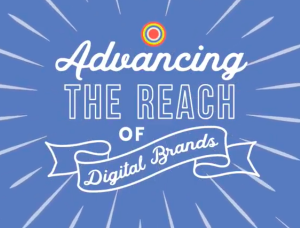Best Sellers Rank
If you’ve ever shopped on Amazon, looking for a particular product, you know how that little gold flag over the photo of an item draws your eye.
“Best Seller,” it proclaims. That tag lets you know that that item has been chosen by hundreds, if not thousands, of other shoppers. It’s like other Amazon customers, just like you, telling you that this item suited their needs, and it could do the same for you.
 If you’re a seller, you know the power that that little gold flag has, drawing in customers and turning those who are “just looking” into useful conversions and buyers. But how do you get that gold flag on your item, especially when you’re launching a new product?
If you’re a seller, you know the power that that little gold flag has, drawing in customers and turning those who are “just looking” into useful conversions and buyers. But how do you get that gold flag on your item, especially when you’re launching a new product?
What is Best Sellers Rank?
Best Sellers Rank is something that Amazon awards based on sales from their website. It is updated hourly and takes into account the recent and historical sales of every item sold.
A recent change for the Best Sellers Rank was the addition of categories and subcategories. Now you can look at an item and see how well it is selling compared to other items in those categories.
Kindle books have their Best Sellers lists divided into two categories: paid and free. For a Kindle book to qualify as free, it has to have a value of $0.00. For it to qualify for the paid category, it has to have a value greater than that.
So, What Does That Mean for New Products?
Keep in mind that the Best Sellers Rank only counts total aggregate sales for a specific product. This isn’t normal product ranking, which controls where your product appears on a search result. Let us say that again. Best Sellers Rank only takes into account sales of your product in its specific category and subcategory compared to other products in that same category and subcategory. So your ink cartridges won’t be compared against stuffed Pokémon toys.
But for new products, they haven’t sold anything because they’re new. So do they have a Best Sellers Rank?
No.
Again, it’s because Best Sellers Rank depends on recent and historical sales of the product in question. So your new refillable ink cartridge won’t have a Best Sellers Rank. Yet.
How to Increase Best Sellers Rank for a New Product
If the Best Sellers Rank for a given product is entirely dependent on the recent and historical sales of that product, then it follows that the best way to increase your Best Sellers Rank is to increase sales!
Here are some things you can do to increase the sales of your new product:
- Increase your product’s exposure through social media and your own website
- Carefully go over your product listings with a fine tooth comb to ensure that both the front end – product description, bullet points, etc. – and the back end – search terms, key words – are complete and optimized.
- Run PPC campaigns of all three types. This will not only increase your click-through rate and garner you a few sales, you’ll also gain valuable insight into what keywords are drawing traffic and which aren’t.
- Decide on an effective pricing strategy. Keep in mind that undercutting everyone isn’t always the best policy.
The Buy Button Effect
One particular area that can greatly increase sales is making sure that you get into the “buy-button” rotation with your subcategory. That’s the yellow button that says, “Add to Cart” or “One-Click Buy” or even just “Buy Now.” Roughly 70 to 80 percent of all sales on Amazon are generated with that button.
 70% to 80% of all sales across the entire website use that button, so if your product has it, then you’re that much more likely to get the sale.
70% to 80% of all sales across the entire website use that button, so if your product has it, then you’re that much more likely to get the sale.
So how do you get into the buy button rotation? Amazon hasn’t released the specific algorithm for how they determine what item gets the button, but there are some things that are known.
First, the buy button rotates through all the sellers who are eligible for the button. So, let’s say that you are one of five people who sell a Canon refillable ink cartridge for a specific printer. How do you make sure you’re eligible for your time with the button? In general, everyone who has the buy button for a specific product is priced in a certain range. Keep in mind that having the lowest price doesn’t guarantee you will get that buy button. That means that in your pricing strategy, you might make your ink cartridge five or ten cents over the lowest seller.
Secondly, depending on where your FBA warehouse is depends on who sees your product with the buy button. Think about it for a moment. If your cartridges are sitting in an FBA warehouse in New Jersey, then your product will most likely have the buy button for someone in Pennsylvania. Likewise, a competitor who has product in a warehouse on the west coast will have the buy button for shoppers in California. Amazon does this to ensure that they can fulfill their Prime shipments with as little hassle as possible.
Of course, these only matter if you’re not the only one who sells a particular item. And they only matter if Amazon doesn’t sell the item in question. If Amazon sells it, then they will likely hold onto the buy button themselves.
It’s a Tortoise Race, not a Rabbit Run
Before you go out and plan a huge release for your new product, remember that the Best Sellers Rank takes into account past sales. And thanks to a nifty algorithm, they can also predict future sales. So rather than sell 100 units in the first day and then none the next four days, you want to try to sell 20 units per day for five days.
That trend will give Amazon a good idea that hey, this product is trending very well and evenly over a period of time. Your Best Seller Rank will steadily climb. If you draw in 100 sales the first day, your Best Seller Rank may very well make a huge splash, but as sales languish for the following days, the BSR is going to take a nose dive.
So don’t drop all of your PPC campaigns on day one. Set three for day one, then another one for day three after you’ve gotten some good data on keyword penetration. Then post another campaign on day four. This will spread out your launch and give you some excellent keyword data.
Likewise with your social media launch announcements. Do countdowns and get people excited for your Day One release, but don’t neglect the follow-up. Remind people that you have this great new product while showcasing some initial positive reviews. If you can get reviews from authority sites like CNET or even one of the Gawker Media sites, don’t hesitate to link those as well. Creating quality links will not only help immediate coverage and sales, it will have a long lasting effect as well.
Best Sellers Rank Isn’t Everything
Lastly, don’t forget that your product’s BSR isn’t everything. You might not get that coveted Best Seller tag, but that doesn’t mean your product can’t do very well. Best Sellers Rank is recalculated every hour, and one sale can have a huge effect on how products are ranked. Don’t let a dip get you depressed, nor should you let a spike have you planning champagne and caviar lunches.
Remember that the overall goal for your Amazon business is to make sales. So while paying attention to your new product’s BSR is a great way to get an impression of how well you’re going to do, you can’t neglect building the foundations for organic search. Because after your launch is a month old, or even a year old, it’s those keywords that you found and the content that you created that will keep your product selling.

Guest post by Andrew Maff, Director of Marketing & Operations for Seller’s Choice. Seller’s Choice provides uniquely personalized marketing & managed services for digital marketplace sellers, e-commerce merchants, & brand builders worldwide.